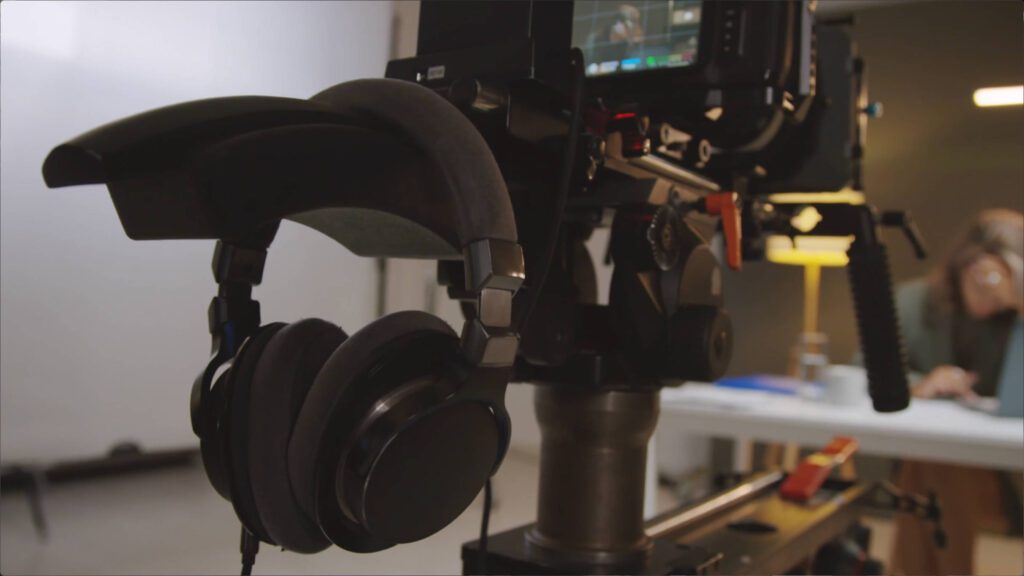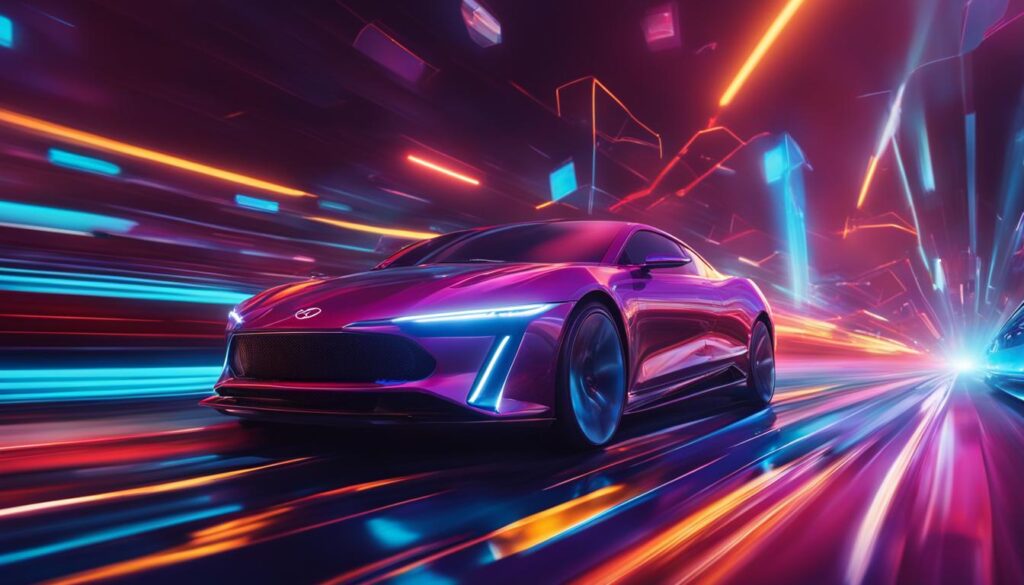Sound design plays a crucial role in video production, significantly impacting the overall quality and impact of a video. While visuals grab attention, sound design adds depth, emotion, and realism, making the audiovisual experience more immersive and engaging. Sound design in video production refers to the meticulous process of creating and integrating sound elements to enhance storytelling, evoke emotions, and effectively convey information. It involves the careful selection, editing, and mixing of various audio components such as dialogue, music, sound effects, and ambient sounds to create a cohesive and impactful audio experience.

Elements of Sound Design
Sound design encompasses several elements, including sound effects, background music, dialogue, and Foley sound. Each element contributes to the overall audio experience, making it crucial to carefully consider and craft these elements during video production.
Sound effects add depth and realism to a video. They can be used to emphasise actions, create an atmosphere, or evoke specific emotions. Whether it’s the subtle sound of leaves rustling in the wind or the thunderous crash of waves against the shore, sound effects contribute to the sensory experience and make the video more immersive.
Background music sets the tone and mood of a video. It can enhance emotions, build tension, or create a sense of excitement. Well-selected and well-composed music can significantly enhance a video and make it more memorable and captivating.
Dialogue carries the story forward and helps convey important information. Clear and intelligible dialogue is crucial to ensure the audience understands the message being delivered. Sound designers work closely with voice actors and audio engineers to capture, enhance, and mix dialogue effectively.
Foley sound refers to the reproduction of everyday sound effects in post-production. These sounds, such as footsteps, door creaks, or the rustling of clothes, add realism and depth to the video. Foley artists use various props and techniques to recreate these sounds accurately.
Enhancing Narrative and Storytelling
Sound design plays a vital role in enhancing narrative and storytelling in video production. By carefully crafting the audio elements, sound designers can create an immersive experience that captivates the audience and reinforces the intended emotions. One way sound design enhances storytelling is by creating atmosphere and mood. A tense scene can be amplified with eerie sounds and a foreboding score, while a joyful moment can be accentuated with uplifting music.
Furthermore, sound design helps establish the time and place of a video. By incorporating location-specific sounds and ambient noise, video producers can transport the audience to a specific setting. Whether it’s the bustling streets of a city or the serene tranquility of a countryside, the auditory cues contribute to the overall authenticity of the video.
Importance of Sound Quality
In addition to the creative aspects, sound quality is of utmost importance in video production. Poorly recorded audio or subpar sound editing can significantly diminish the impact of a video. To ensure high-quality sound, attention must be given to various aspects, including clear and crisp audio, professional recording techniques, and meticulous sound editing and mixing.
Clear and crisp audio is essential for effective communication. Background noise, microphone interference, or muffled dialogue can distract the viewer and create a negative impression. It is crucial to utilise quality recording equipment, soundproof recording environments, and skilled audio engineers to capture pristine audio. Professional recording techniques, such as proper microphone placement and adjusting input levels, are essential for obtaining optimal sound. Conducting audio tests, monitoring audio levels, and using windshields or pop filters can prevent unwanted noise and ensure clean recordings.
Sound editing and mixing involve refining and balancing the audio elements. Removing unwanted noise, adjusting volume levels, and blending the sound elements seamlessly contribute to a polished final product. Proper equalisation, dynamic processing, and spatial effects can further enhance the audio quality and overall listening experience.
Engaging the Audience
The role of sound design goes beyond technical aspects; it plays a pivotal role in engaging the audience and making the video more memorable. By capturing attention, evoking empathy, and immersing the viewer, sound design helps create a lasting impact.
One way sound design captures attention is through auditory cues. Attention-grabbing sound effects or a unique musical motif at the beginning of a video can pique the viewer’s interest and compel them to continue watching. These auditory hooks can also be used strategically throughout the video to maintain engagement.
Moreover, sound design has the power to evoke empathy and create a connection between the viewer and the video’s content. By carefully selecting and manipulating audio elements, sound designers can elicit specific emotions and forge an emotional bond with the audience. Whether it’s empathy, excitement, or nostalgia, the right audio can evoke a visceral response.
Sound Design Techniques
Sound designers employ various techniques to create impactful audio experiences in video production. These techniques include layering and blending sounds, sound synchronisation, and panning and spatial effects.
Layering and blending sounds involve combining multiple audio elements to create a rich and textured sonic environment. By layering sounds with different characteristics, sound designers can add depth and complexity to the audio, making it more engaging and realistic. Blending sounds seamlessly ensures a cohesive and balanced auditory experience.
Sound synchronisation refers to the precise coordination of audio and visual elements. It involves aligning sound effects, dialogue, and music with the corresponding visuals, ensuring a seamless integration between the two. Accurate synchronisation enhances the viewing experience and reinforces the narrative.
Panning and spatial effects are techniques used to create a sense of space and depth in the audio. By manipulating the placement of sound in the stereo or surround sound field, sound designers can enhance the perception of movement, location, and perspective. This technique adds an extra layer of immersion and realism to the video.
Conclusion
In conclusion, sound design plays a vital role in video production by enhancing storytelling, engaging the audience, and creating a lasting impact. By carefully selecting and manipulating sound elements, video producers can create a more immersive and emotionally compelling experience. Incorporating sound design into video production not only elevates the quality but also communicates the intended message more effectively.
Sound design is an often overlooked but integral component of video production that should not be underestimated. So, for your next video project, don’t neglect the power of sound design and its potential to captivate and engage your audience.
FAQs
1. Can I use royalty-free music and sound effects in my video production?
Yes, using royalty-free music and sound effects is a popular and cost-effective option for many video producers. There are numerous online platforms that offer a wide range of high-quality royalty-free audio resources, allowing you to find suitable music and sound effects for your video without worrying about copyright issues.
2. How can I ensure clear and crisp audio in my video recordings?
To achieve clear and crisp audio in your video recordings, consider the following tips:
- Use a quality microphone suited for your recording environment and purpose.
- Position the microphone correctly, ensuring it is close to the sound source and pointed in the right direction.
- Reduce background noise by choosing a quiet location or using soundproofing techniques.
- Monitor and adjust audio levels during recording to avoid distortion or clipping.
- Use windshields or pop filters to minimie unwanted noise caused by plosive sounds.
3. Is it necessary to hire a professional sound designer for my video production?
While it’s not always necessary to hire a professional sound designer, especially for smaller projects, their expertise can significantly enhance the audio quality and overall impact of your video. A skilled sound designer brings technical know-how, creativity, and a keen ear to the process, ensuring that the audio elements effectively support the video’s objectives. Collaborating with a professional sound designer can ultimately elevate the production value and viewer experience.
4. How can I effectively synchronise sound with visuals in my video?
To synchronise sound with visuals effectively, consider using a video editing software that allows precise control over audio and visual elements. Use the software’s timeline and editing tools to align sound effects, dialogue, and music with the corresponding visual cues. Pay attention to the timing, ensuring that the audio events occur simultaneously or with the desired delay to achieve seamless synchronisation.
5. What are some cost-effective ways to create custom sound effects for my video production?
If you’re looking to create custom sound effects on a budget, consider the following options:
- Experiment with everyday objects to produce unique sounds. For example, a crumpled piece of paper can mimic the sound of fire.
- Use free or affordable sound editing software to modify existing sound effects and create variations.
- Explore online communities and forums where sound designers share their creations for free or at a minimal cost.
- Reach out to aspiring sound designers or audio students who may be interested in collaborating on your project at a reduced rate or in exchange for credit.





